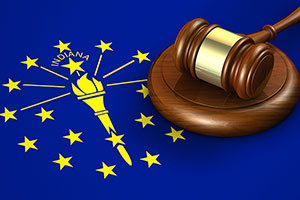The Capitol riot investigation has benefitted from people who recognized neighbors, co-workers, and relatives in videos that were posted to social media accounts. Many individuals who stormed the Capitol were either proud of their actions or thought their friends would be entertained by their antics. As they added evidence of their crimes to social media accounts, acquaintances who were shocked by the January 6, 2021 riot brought that evidence to the attention of law enforcement.
Within weeks, rioters who had treated their actions as a lark were scrambling to remove their posts from social media accounts. To conceal evidence of their presence inside the Capitol, individuals closed social media accounts, deleted pictures and videos from their phones, and even smashed their phones to hinder recovery of deleted files. Law enforcement has turned to amateur and professional experts to make cases against hundreds of participants in the Capitol breach.
Open Source Experts
Fortunately for law enforcement, journalists and other concerned Americans recognized the risk that evidence would be scrubbed from social media. Beginning on January 6, they began a collective effort to search Facebook, Instagram, and other social media sites and to archive the livestreams, pictures, videos, and narratives that they found. Open source experts used “automated social media scraping programs” to find incriminating evidence and created shared spreadsheets to catalog and archive their discoveries.
One individual used “open source machine learning and facial recognition software” to capture “every face from the 827 videos that were posted to Parler from inside and outside the Capitol building on January 6.” All of those faces were posted to a website. While some of the individuals who were outside the Capitol might not have trespassed, the site made it possible for individuals who recognized faces to contact law enforcement officers who could investigate further.
The evidence archive has been beneficial to law enforcement, but it has also promoted a broader search for the truth. False claims by politicians and cable media outlets that the riot was caused by antifa or left-wing agitators failed to gain traction, in part because archived video evidence failed to support those claims.
Facial Recognition Experts
Law enforcement officers were able to supplement the open-source archive with pictures and videos taken by security cameras within and surrounding the Capitol. With help from a variety of sources, law enforcement has been able to identify hundreds of individuals whose faces appear in pictures and videos.
While many individuals who breached the Capitol were identified by people who knew them, law enforcement officers turned to facial recognition experts to identify others. In some cases, experts received tips that identified people who were suspected of entering the Capitol, then used technology to find those individuals in videos of the riot.
In other cases, experts began with a picture of a rioter and compared the picture to databases that include photos from multiple sources, including mug shots, driver’s license photos, dating apps, and selfies found on social media. For example, experts using facial recognition technology were able to identify Stephen Chase Randolph, who was seen on video “assaulting multiple US Capitol Police officers.”
Cellphone Tracking Experts
Cellphone tracking experts gathered the “phone numbers of congressional members and staffers, responding law enforcement officers and agents, Secret Service protectees, responding medical personnel, and other authorized governmental employees” who were inside the Capitol during the riot. Cellphone tracking experts then used technology to identify cellphones that were present in the Capitol during the riot.
The cellphone data came from GPS locations transmitted by the phones, as well as information about nearby Wi-Fi access points and Bluetooth beacons. By subtracting phones belonging to persons whose presence was authorized, authorities were able to identify phones that may have belonged to trespassers and rioters. That evidence contributed to the arrest of Jeremy Daniel Groseclose after experts concluded that a phone associated with Groseclose was probably inside the Capitol during the riot.
Expert Witnesses
None of the Capitol riot cases have gone to trial, in part because video evidence, selfies, and incriminating social media posts have provided compelling evidence of guilt in most cases. If cases do go to trial, expert witnesses are likely to pay a vital role.
While selfies have generally created clear images, it is not always easy to pick out faces from videos of the rioting crowd. Digital enhancement experts will likely testify about techniques they used to stabilize moving images, remove blurs, and increase the clarity of images. Combined with cellphone and facial recognition experts, the Department of Justice hope to present convincing expert evidence to prove the guilt of Capitol rioters.





